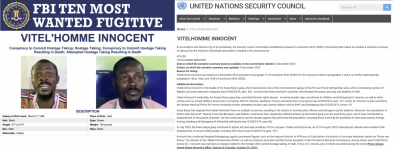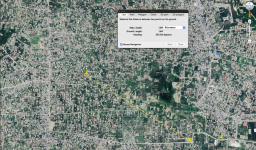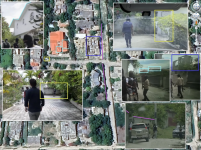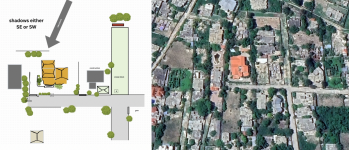Fixxx
Moder
- Joined
- 20.08.24
- Messages
- 970
- Reaction score
- 3,795
- Points
- 93

This case will demonstrate how GEOINT methods were used to locate the leader of a gang who was included in the FBI's list of the most wanted criminals with a reward of $2 million offered for his capture. In April, CNN journalists interviewed Haitian gang leader Vitel'Homme Innocent in his "home". It was located at: 18.5278, -72.2314. Vitel'Homme is a citizen of Haiti and the leader of the Kraze Barye gang, which operates in the Torcel and Tabarre areas of Haiti and is actively involved in kidnappings for ransom, extortion and car theft. In October 2021, Kraze Barye and the "400 Mawozo" gang allegedly kidnapped 16 U.S. citizens serving as Christian missionaries near Port-au-Prince, Haiti. The group included five children, one of whom was only 8 months old. The hostages were reportedly held at gunpoint, and most remained captive for 61 days before escaping. On November 7, 2022, Vitel'Homme was charged with conspiracy along with other gang leaders. Additionally, on October 7, 2022, Vitel'Homme ordered gang members to kidnap two U.S. citizens from their home in Haiti. Armed gang members broke into the victim's house and attempted to abduct them. During the kidnapping, gang members allegedly shot one of the victims. The other victim was taken hostage and held in an unknown location in Haiti while Vitel'Homme participated in ransom negotiations for the victim's release. He is also on the UN and EU sanctions lists and the FBI placed him on its list of 10 Most Wanted Fugitives with a reward of $2 million.
It's worth noting that in the CNN interview, he was asked if this was his home, to which he confirmed. It's unknown whether this is indeed his home or if it still is, considering it was broadcast on CNN. Understanding the exact location of this dangerous gang leader is crucial, even if he may have moved after the CNN interview. Innocent's actions have serious consequences, so details about his whereabouts are of significant interest. Using various OSINT techniques, Benjamin Strick was able to determine the location of his residence by breaking down the video. By analyzing footage from the interview, he searched for any geographical clues that might be present in satellite images.
Geospatial Intelligence
GEOINT, or geospatial intelligence, is the process of using and analyzing imagery and geospatial information to describe, assess and visually represent physical features and establish geographic references for activities on Earth. So, focusing on the CNN interview footage, at the 01:04 timestamp, several key objects were visible: a large wall, a factory roof, a road bend and a mountain range surrounding Port-au-Prince, the capital of Haiti. Using Google Earth, the investigator was able to find the exact same mountain range, which helped confirm the location. If you want to know how to do this, Benjamin has a tutorial on YouTube about using Google Earth.
These details led him to the coordinates 18.5447, -72.2359.
Further clues came from architectural elements. For example, the unique street wall in the footage was easily recognizable and helped narrow down the search area.
The author was beginning to form an idea of the direction they were heading and started searching for the specific house where the interview took place. Upon closer examination of the interview, it became clear that the roof was orange, considering the color in the video. This complicated the search, as most mansions in the area have orange roofs. Benjamin again used Google Earth, reviewing all buildings with orange roofs for the same design and shape as seen in the CNN footage.
By comparing the footage taken in the "home" where the CNN team met with Innocent, it became clear that it matched the building visible here: 18.5278, -72.2314. Key clues included features such as the double triangular roof visible from the side, the entrance at the end of the street and the neighboring structure.
One of the things that simplified this geolocation was that the author created an object image of how this area would look on a map based on what he could see in the interview footage. The image below shows how much can be gleaned from just the footage compared to the satellite image, creating a reference image.
This case took the author just over 4 hours, with several unsuccessful attempts at the start. Nevertheless, it shows that with determination and thorough research using specific techniques, anyone can perform such investigative work. Additionally, the author analyzed this case in video format for greater clarity in determining movement routes; using landmarks such as mountains and other features to narrow down search areas and reconstructing the terrain for accurate location identification.
GEOINT is a powerful tool for gathering critical information and can be useful in various fields: from journalism to law enforcement.








